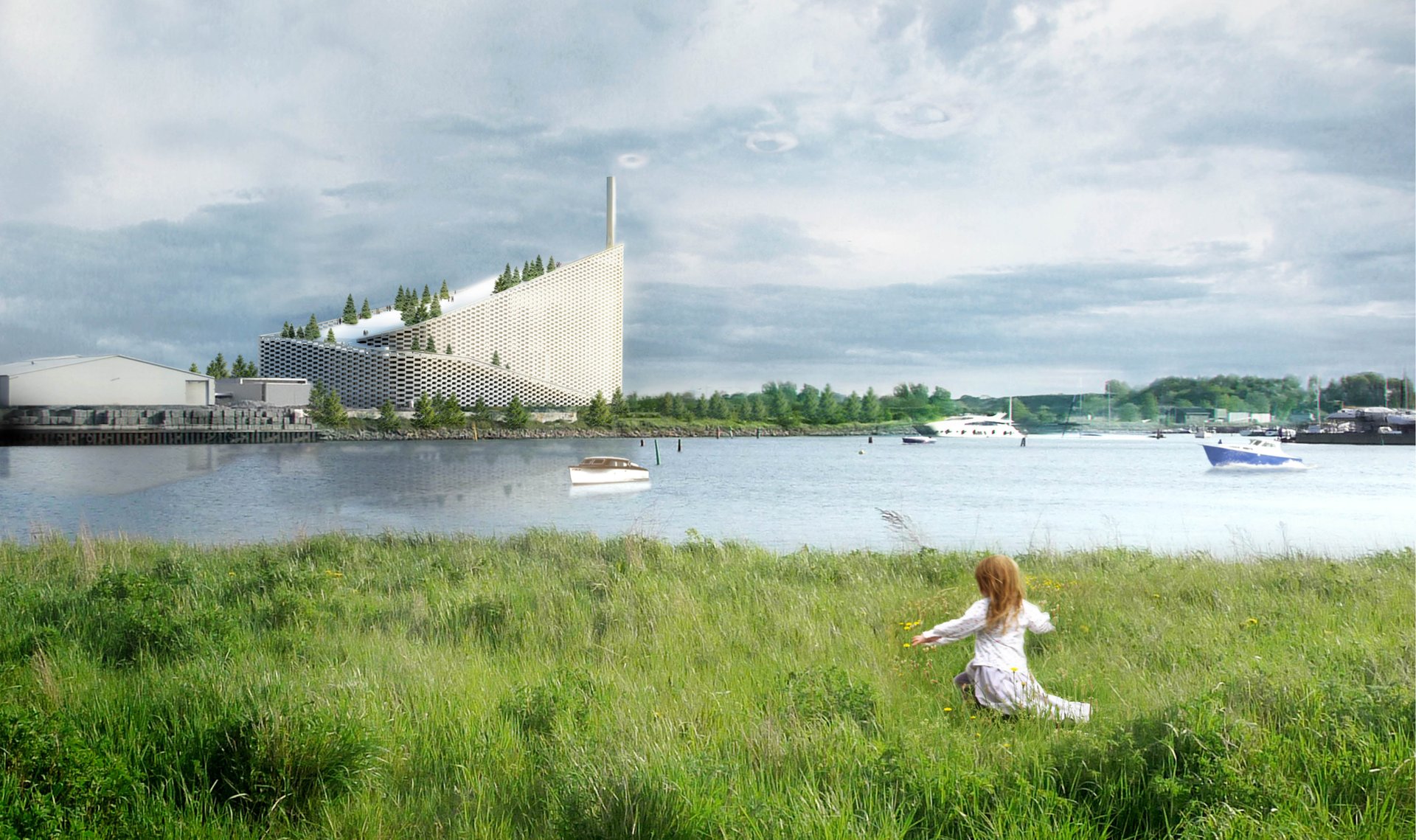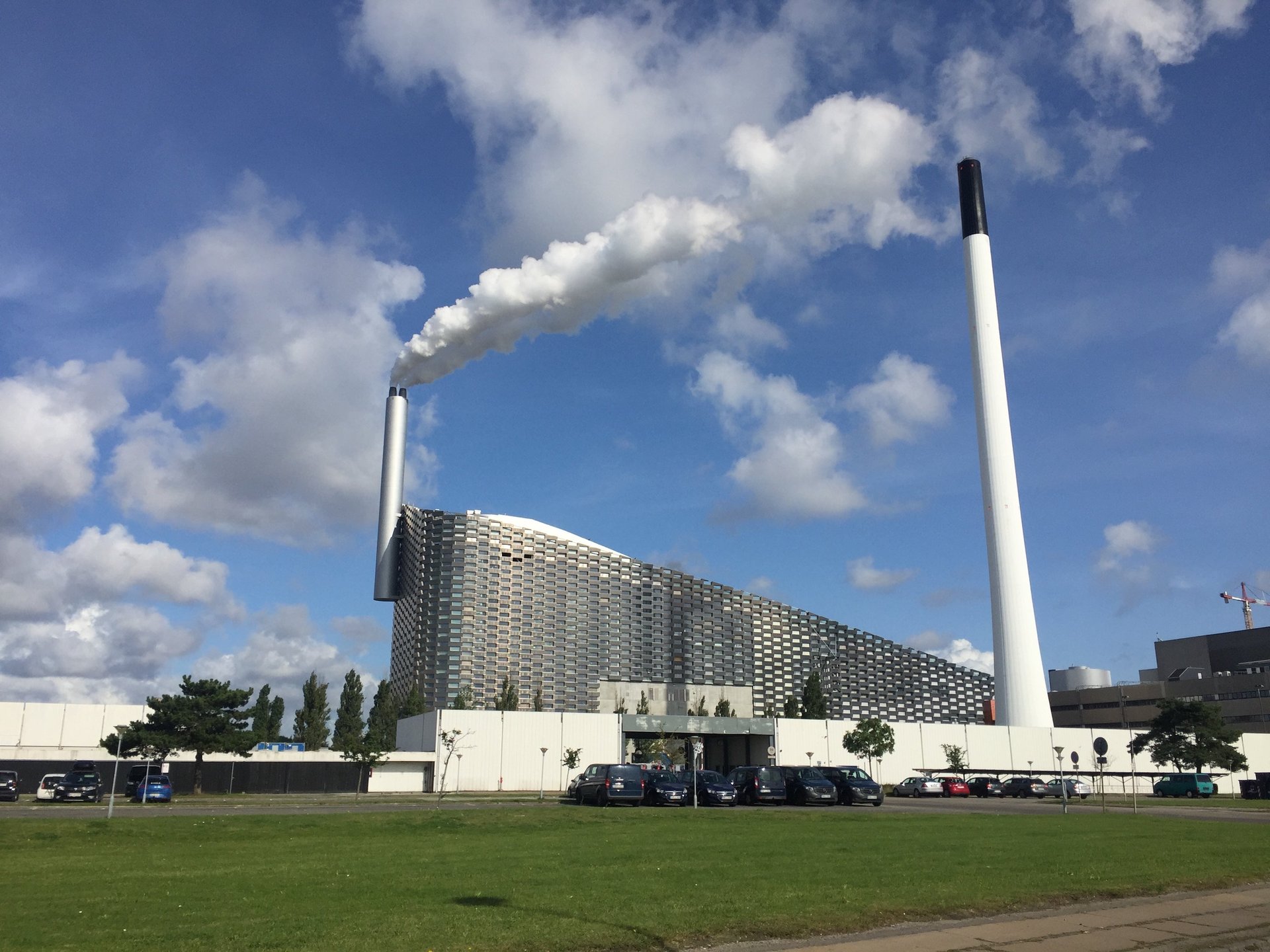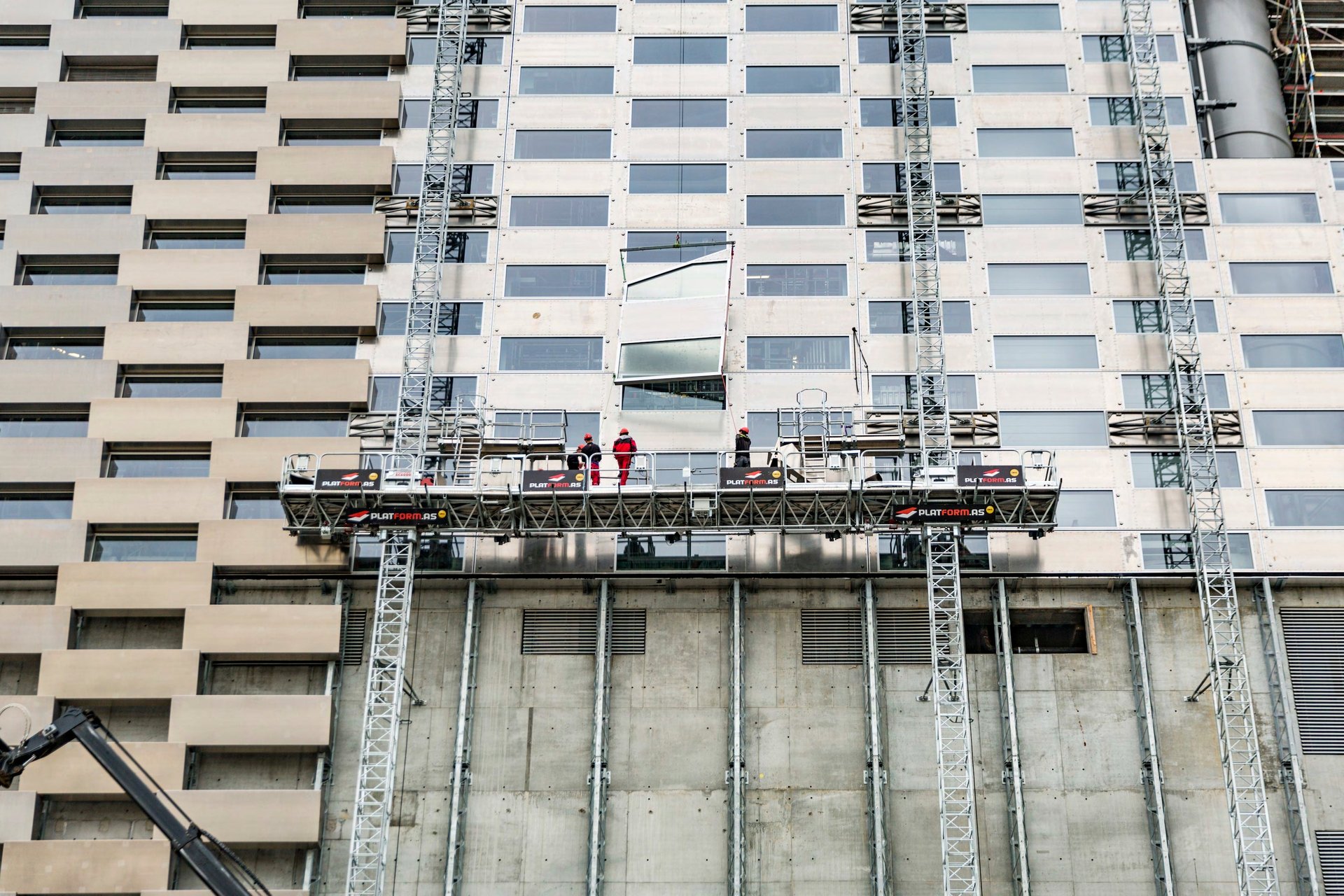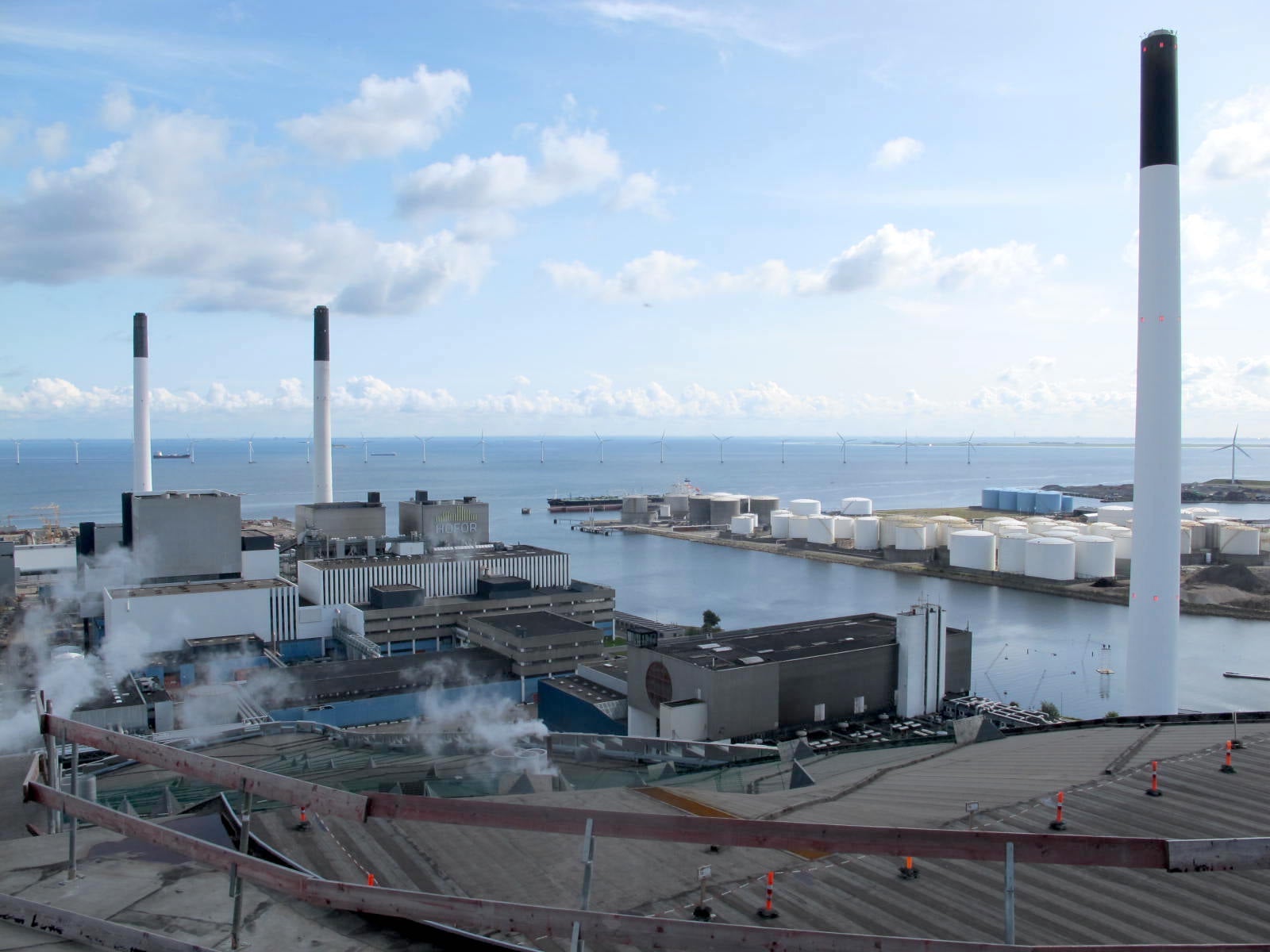Copenhagen’s newest architectural gem is a waste management plant
The most highly anticipated 2018 opening in Copenhagen—besides Noma 2.0, the Michelin-starred restaurant that put New Nordic cuisine on the culinary map—is a stunning architectural gem on the outskirts of town, CopenHill.


The most highly anticipated 2018 opening in Copenhagen—besides Noma 2.0, the Michelin-starred restaurant that put New Nordic cuisine on the culinary map—is a stunning architectural gem on the outskirts of town, CopenHill.
Unlike the luxe restaurant, Amager Resource Center’s (ARC) CopenHill will have a profound effect on the lives of all the people of Copenhagen: It’s the city’s waste management and energy plant.
The facility, also known as Amager Bakke, will be the most efficient waste burning and energy-generating plant in the world when it’s complete, projected for the summer of 2018. Its roof will have an artificial ski slope, a small grove of trees, and provide support for the world’s tallest artificial climbing wall. And it’s surrounded by a sprawling recreation area with water sports, soccer fields, and even a go-kart track.
Last year the city unveiled a 13-kilometer route around the inner harbor that connects formerly industrial waterways with green bicycle paths, bridges, cultural institutions and newly opened dining establishments. It all adds up to a powerful retort to the question, “Why does sustainability have to be boring?”
The skies were unseasonably blue when I visited Copenhagen recently, and first encountered CopenHill’s impressive prism of glass and aluminum, visible from the bridges and towers throughout the city center. Before entering the site for a preview, our small group of visiting press suited up with hard hats and steel-toe boots.

As a design journalist, I have always embraced the ways that architecture can elicit an emotional response, but I never thought I could fall in love with a building. Danish design has a deep history with global influence—from Hans Wegner’s Wishbone chair to Arne Jacobsen’s Modernist architecture, furniture, and fixtures—but CopenHill stands to redefine the reputation of Danish design on a global stage from a mid-century aesthetic to a future-gazing philosophy of radical, urban sustainability.
As we approached CopenHill, our group of journalists dropped all professional pretense and began oohing and ahhing, taking selfies, and holding up our tour with the building’s project manager, architect Jesper Boye Andersen, and Sune Scheibye, the plant’s communication consultant.
Although ARC has operated on the site since the 1970s, when the company called for bids to design a new waste to energy facility in 2011, it asked for proposals for active architecture to promote recreation on the site, beyond its primary function as a co-generation plant.
The winning design was a combination power plant and rooftop ski slope from Danish architecture firm Bjarke Ingels Group (BIG). “Some of the other architects came up with rooftop gardens,” Scheibye notes, “but the judging committee all agreed that BIGs proposal was the better one.”
The new plant will be able to produce 25% more energy than the existing plant from the same amount of waste, and it will power and heat 160,000 households across Copenhagen. The technology that powers the plant will also make it the most efficient waste burning plant in the world and allow for flexibility for future energy production.

But CopenHill is not only notable for its efficiency—this hulking masterpiece is also designed to maximize the amount of daylight the employees receive. “This is done by enlarging the glass panels in the area, where the employees stand and sit,” explained Andersen. “That is also why the pattern of the bricks changes on this façade. In the rest of the waste management facility, the brick façade also ensures a consistent flow of daylight, through the glass panels mounted between the aluminum bricks.”
This interplay between glass and stacked aluminum brick makes for a handsome monument with a perforated facade that invites a warmth and curiosity. What makes this plan radical is that it takes a piece of urban infrastructure which is usually hidden away or in a remote location and turns it into a desirable destination.
“It was obvious that the architecture should be inviting and fun to visit,” Andersen says. “All this is achieved by combining sustainability with a hedonism.”

CopenHill expects to receive 57,000 visitors in its first year, many eager to see its much-lauded ski slope, as well as the world’s tallest artificial climbing wall (expected to be 10 meters wide by 88 meters high). “One of the biggest sports in Denmark is actually skiing, even though it is one of the flattest countries in Europe,” Andersen explained. “It was obvious that we needed a ski slope, and with 10,000 square meters of roof, it was possible.”
From the top of that slope, the view of the surrounding waters is an impressive testament to the country’s dogged sustainability efforts. Wind turbines dot the surrounding waters and one can glimpse the shores of Sweden across the Øresund.
Whether you’re biking along the paths of Harbour circle, or winding your way through the maze of attractions at Tivoli Garden, the steady rise of steam from CopenHill’s chimney acts like a north star for navigating the city. In 2015, BIG proposed transforming the smoke stack, a symbol of the industrial era, into a “communicator for the future,” creating a vision of architecture as environmental art. With each ton of CO2 emitted by the plant, the firm proposed that the chimney would puff out a giant steam ring, a public service announcement to the city’s citizens.
There has been no confirmation that the design smoke ring functionality will be integrated into the final operating procedures, but the technology has been tested, and the firm successfully raised funds on Kickstarter in 2015 to build a “final prototype.”
As Copenhagen embraces a period of sustained growth, its planners are seeking to create a more intimate relationship between consumers and their waste.
“It’s part of an educational increase of people’s awareness,” Scheibye says. “What happens to the waste the citizens produce? We want to point it out and explain how waste is used for several purposes—such as recycling and of course heat and electricity production.”
Integrating technology and design in service to creating more sustainable and livable cities, CopenHill represents an approach to public architecture that should be a blueprint for cities of the future.